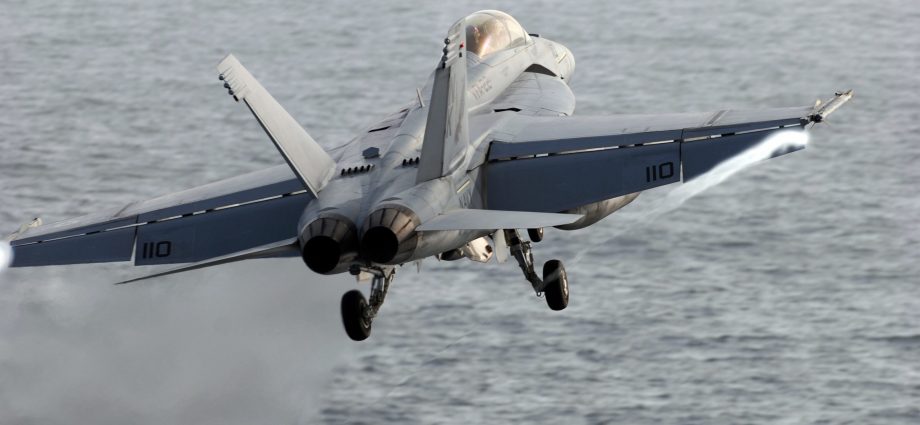The US Air Force has commenced development of an unmanned aerial tanker, a bid to fill a capability gap in its current aerial refueling capabilities in the Indo-Pacific amid spiraling tensions with China.
The move comes amid China’s improving air-to-air beyond-visual-range (BVR) and anti-access/area denial (A2/AD) weaponry and aims to better exploit the dispersion and mobility afforded by regional bases and aircraft carriers.
Last week, Air and Space Forces magazine reported that the US Air Force (USAF) is searching for contractors for its Next-Generation Air-Refueling System (NGAS), a stealthy unmanned aerial tanker envisioned to enter service in 2040.
The report notes that the USAF “is interested in innovative solutions in all size and performance classes that might address the stressing mission requirements” and that the speed of the aircraft concepts submitted “should be compatible with modern receivers.”
The report also mentions that the risks involving this new technology and its operating concepts should reach Technology Readiness Level 6, meaning that model or prototype should be tested before 2032.
The USAF has reportedly instructed potential contractors to provide detailed information about their designs, including “size and weight, takeoff and landing, climb, cruise and representative mission performance,” and if their proposals can use “regional or improvised airfields or other, non-traditional basing.”
The USAF has reportedly stressed that proposed designs should be able to receive fuel in mid-air and transfer it to other aircraft.
The Air and Space Forces magazine report also states that the USAF requires potential contractors to identify the level of technology maturity of their designs, provide timelines for fielding, explain how their proposals can change how aerial refueling operations are done and how their designs will counter anticipated threats in the 2040 timeframe.
The “tyranny of distance” drives the need for aerial refueling capability in the Indo-Pacific. In a 2016 Foreign Policy article, James Holmes notes that geography attenuates or nullifies the advantages of a stronger military over a weaker adversary fighting on its territory.
Similarly, Patrick Hulme and Erick Gartzke, in a January 2021 article for 1945, note that the US loses its wars when it fights far from its territories, cautioning that this tendency towards poor military performance should be a caveat for US policymakers.
The writers point out that, despite technological advances, the emergence of A2/AD increases the difficulty of power projection in defended areas.

Given the challenges posed by the tyranny of distance, aerial refueling capabilities will play an increasingly important role in overcoming operational challenges. In a November 2021 report by the Hudson Institute, Timothy Walton and Bryan Clark note that force projection is one of the most important advantages gained by aerial refueling capabilities.
Walton and Clark mention that US aerial refueling aircraft currently sustain a very high rate of operations. As a result, they need more spare capacity to handle new missions as peacetime competition between China and Russia intensifies.
They also note the aging condition of the US aerial tanker fleet, with aircraft that are 52 years old on average. Apart from old age, they stress the increasing vulnerability of US aerial refueling, as China is increasingly capable of attacking US aircraft and airbases. That threat raises the need for aerial refueling as combat aircraft increasingly need to reach enemy targets from faraway airbases.
David Axe writes in a September 2021 article for Forbes that the US flies its aircraft from just a handful of bases, mainly from Kadena in Japan and Guam, to cover a vast area of operations stretching across the Indo-Pacific, with aerial tankers keeping combat aircraft airborne for missions that can cover 8,000 kilometers or more.
Axe notes that tankers are indispensable, but large and vulnerable targets need fighter escorts, which in turn need aerial tankers, ad infinitum.
He notes that China has developed long-range air-to-air missiles with multi-mode seekers that can hit aerial tankers at standoff ranges. With that vulnerability, Axe notes that conventional aerial tankers would have to operate at least 1,200 kilometers from China’s coast, which can result in its fighter escorts not having enough endurance to stay on station.
As such, he notes that small, stealthy robotic aerial tankers can operate closer to defended airspace, and such tankers can operate from a large number of civilian and military airfields.
The USAF may thus be developing an unmanned aerial tanker to supplement carrier-based efforts by the US Navy to develop such technology to address the challenges stemming from the tyranny of distance, China’s evolving A2/AD capabilities and an aging tanker fleet.
Defense News reported in July 2021 that the US Navy (USN) conducted its first aerial refueling between an unmanned aerial tanker and manned fighter jet that month, with a Boeing MQ-25 Stingray drone refueling a F/A-18 Super Hornet over Mascoutah, Illinois.

The report notes that the MQ-25 Stingray will relieve the F/A-18 Hornet of tanker missions, which can sometimes amount to one-third of F/A-18 Super Hornet flight hours during carrier wing operations.
These unmanned aerial tanker projects may be part of a larger strategy that emphasizes force dispersion and redundancy to minimize vulnerability, maximize survivability and increase the effectiveness of US airpower in the Pacific by increasing the range, endurance, and payload of US aircraft to operate outside of and penetrate China’s A2/AD bubble.
A stealthy, unmanned aerial tanker may also be in line with the US’ future airpower concepts such as the Next Generation Air Dominance (NGAD) 6th generation fighter and B-21 Raider stealth bomber. Both are designed to operate across the vast expanses of the Pacific, penetrate defended airspace, perform air superiority missions or strike missions, then refuel for further sorties.

